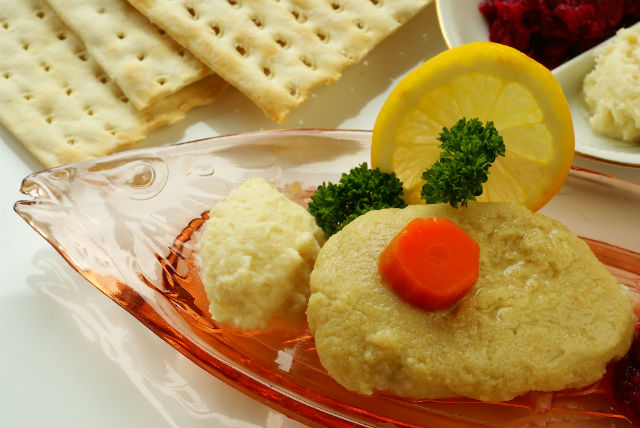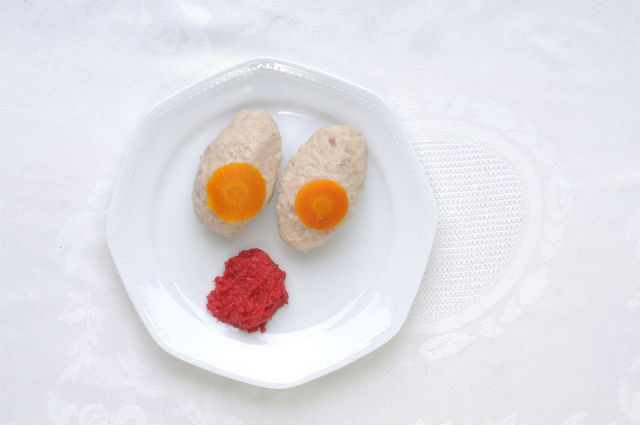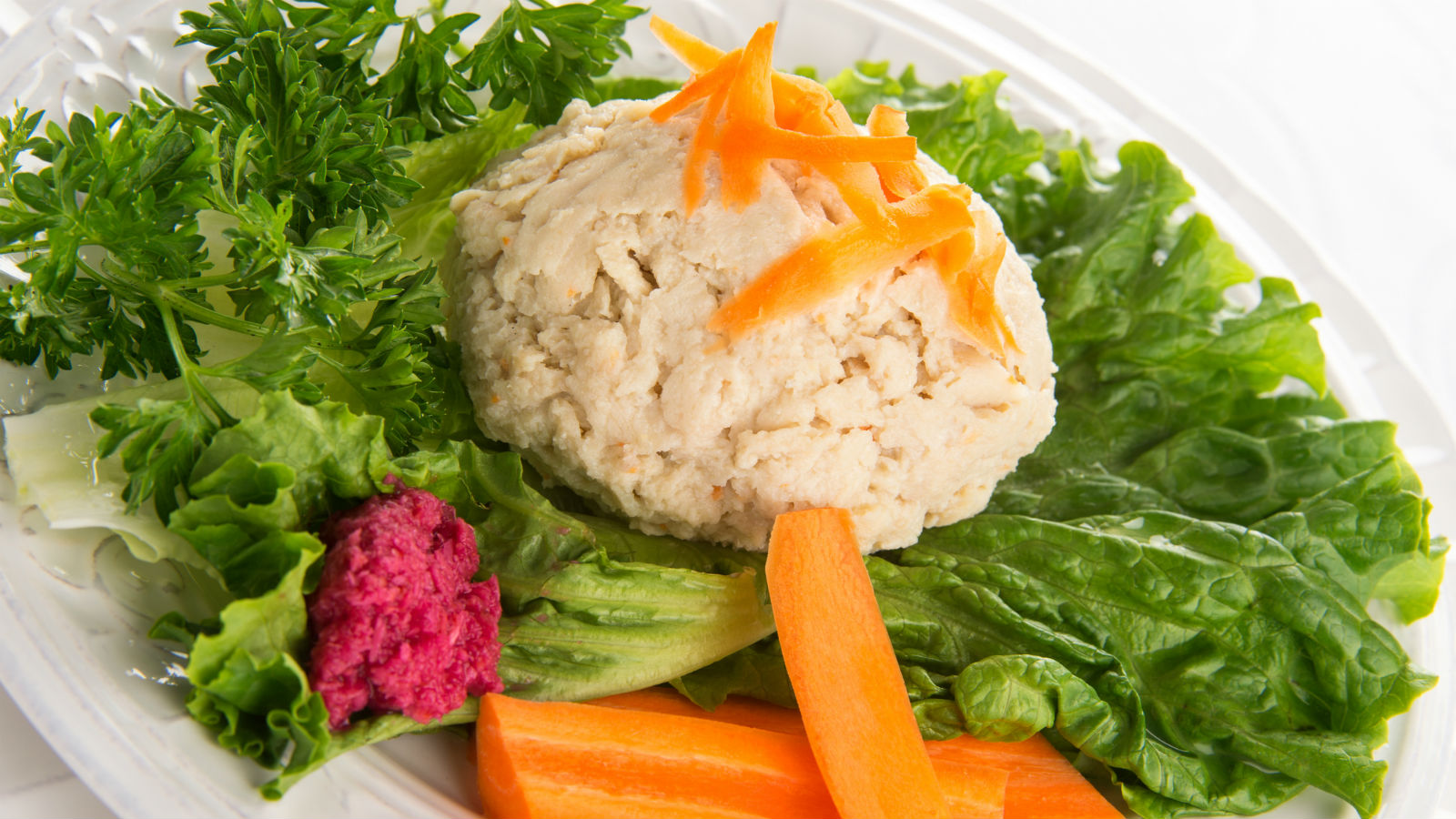What’s the perpetual conflicting source of both gastronomic horror and Jewish nostalgic affection? Gefilte fish, of course! Gefilte fish is a dish of ground, deboned fish, mixed with eggs, matzah meal, and other seasoning, which is then boiled or poached (but can also be baked). The fish is usually a mixture of white fish, carp, pike, and/or mullet.
Score (or subtract) one more for the Ashkenazi Jews as we have them to thank for this sea creature concoction. Although to many Americans the thanks goes to Manischewitz for equating gefilte fish with football shaped mounds that come from a jar and look as if they are suspended in food-grade embalming jelly (this is where some of that horror comes in).

Gefilte, pronounced guh-fil-tuh, means “stuffed” in Yiddish, which reflects the original preparation of stuffing the ground seasoned fish back into the skin of the fish, and sewing it up. Somewhere, someone, rightfully decided that this extra step was pretty narish (dumb), so now, instead, the fish mixture is either shaped into several individual patties or baked as a single loaf. Recipes for gefilte fish can call for sugar (to make it sweet like you may have in Warsaw), or salt and lots of black pepper (for a savory meal to share with your Russian comrades). Modern interpretations often strike a happy sweet-savory medium, and also include other fish like salmon, and layers of vegetables formed in a terrine.
The Nosher celebrates the traditions and recipes that have brought Jews together for centuries. Donate today to keep The Nosher's stories and recipes accessible to all.
Gefilte fish is typically eaten cold as an appetizer with horseradish (and decorated with cooked carrot), and served at Jewish festival meals, such as Rosh Hashanah and Passover. However, the dish was traditionally part of a Shabbat menu as it allowed one to serve fish to a lot of people in an economical way; not to mention, doing so without violating the Sabbath law against “sorting” or selecting (borer) as there was no need for a dinner guest to “work” to debone his cooked fish before eating it.

For me, even those pretty terrines are a little work — an exercise in replacing bad visceral food memories with new less offensive ones. But fine, I will admit it. I have been known to compliment a gefilte fish.



